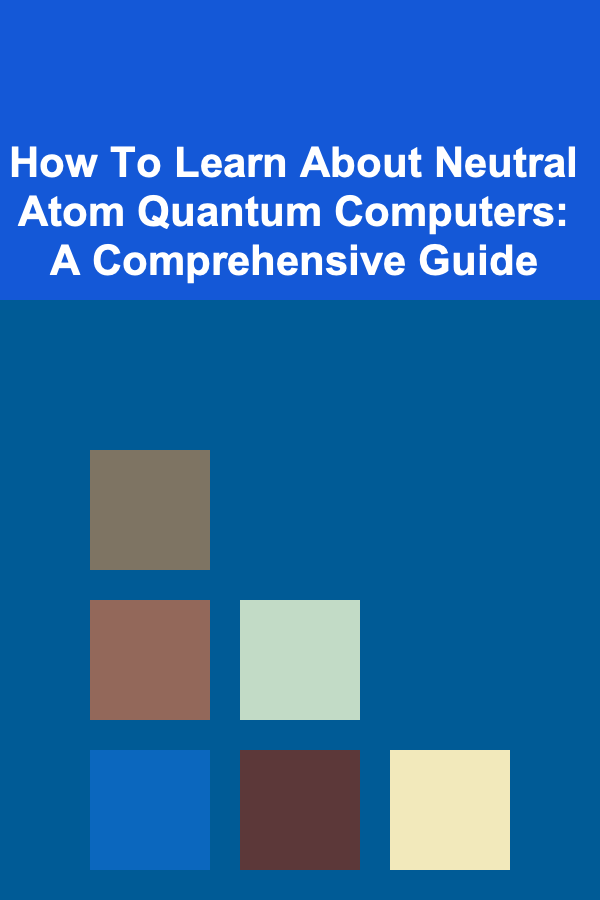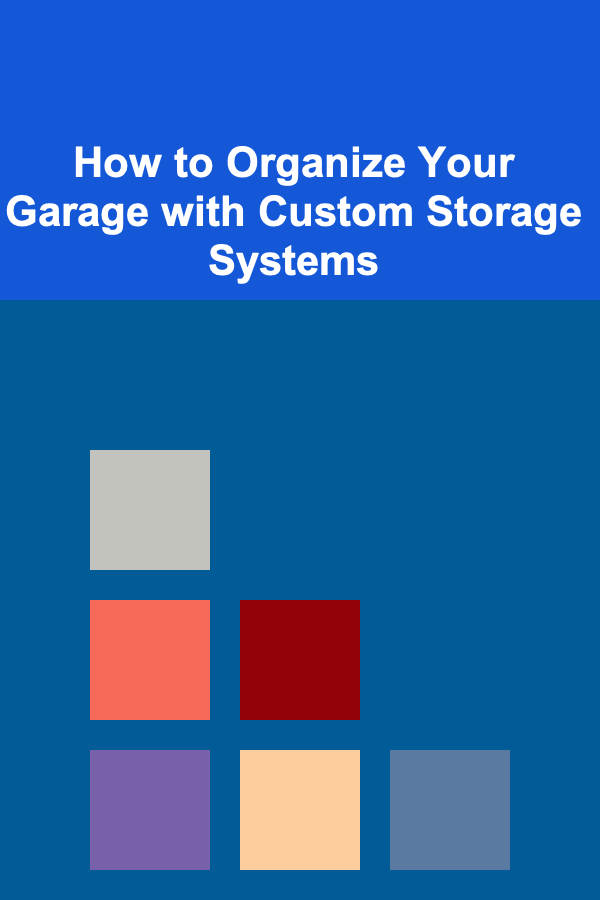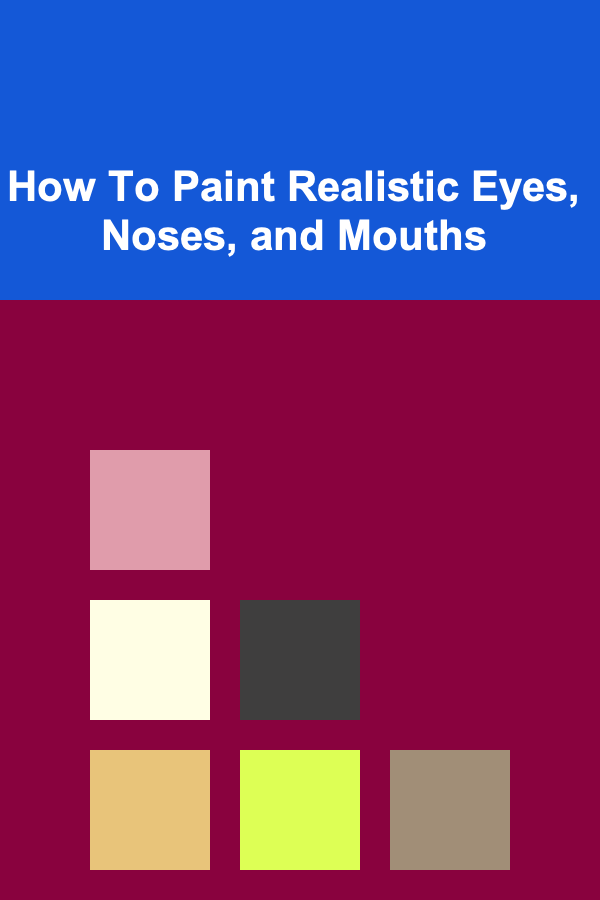
How To Learn About Neutral Atom Quantum Computers: A Comprehensive Guide
ebook include PDF & Audio bundle (Micro Guide)
$12.99$9.99
Limited Time Offer! Order within the next:

Quantum computing is a rapidly evolving field, and neutral atom quantum computers represent one of the most promising platforms for realizing scalable and fault-tolerant quantum computations. These systems, based on controlling and manipulating individual neutral atoms, offer unique advantages and pose fascinating challenges. This guide provides a comprehensive roadmap for learning about neutral atom quantum computers, covering foundational concepts, required knowledge, available resources, and practical steps you can take to delve into this exciting field.
I. Laying the Foundation: Essential Prerequisite Knowledge
Before diving directly into the specifics of neutral atom quantum computing, it's crucial to build a solid foundation in the underlying principles. A strong grasp of these core subjects will significantly ease your learning process and enable you to understand the intricacies of this technology.
A. Quantum Mechanics
Quantum mechanics is the bedrock of quantum computing. You should aim to develop a working understanding of the following key concepts:
- Superposition: The ability of a quantum bit (qubit) to exist in a combination of 0 and 1 states simultaneously. Understanding how this differs from classical bits is fundamental.
- Entanglement: The phenomenon where two or more qubits become correlated, even when separated by large distances. Entanglement is crucial for many quantum algorithms.
- Quantum Measurement: The process of collapsing a qubit's superposition into a definite 0 or 1 state. Understanding the probabilistic nature of measurement is essential.
- Quantum Operators: Mathematical representations of physical operations on qubits, such as rotations and gates. Linear algebra is crucial here.
- Hamiltonian: The operator that describes the total energy of a quantum system. Understanding the Hamiltonian is vital for understanding how quantum systems evolve.
- Time-Dependent Schrödinger Equation: The fundamental equation that governs the evolution of quantum systems in time.
Resources:
- "Quantum Mechanics" by David J. Griffiths: A classic and widely used textbook for introductory quantum mechanics.
- "Principles of Quantum Mechanics" by R. Shankar: Another excellent textbook providing a more rigorous mathematical treatment.
- Online Courses: Platforms like Coursera, edX, and MIT OpenCourseware offer numerous introductory and advanced quantum mechanics courses. Look for courses that use linear algebra as a prerequisite.
B. Linear Algebra
Linear algebra is the mathematical language of quantum mechanics. You will need a solid understanding of:
- Vectors and Matrices: Representing quantum states and operators using vectors and matrices.
- Eigenvalues and Eigenvectors: Understanding the eigenstates and energy levels of quantum systems.
- Inner Products and Hilbert Spaces: Defining the mathematical space where quantum states exist.
- Unitary Transformations: Representing quantum gates as unitary matrices.
Resources:
- "Linear Algebra Done Right" by Sheldon Axler: A rigorous and conceptual approach to linear algebra.
- "Introduction to Linear Algebra" by Gilbert Strang: A more applied and accessible textbook.
- Online Courses: Khan Academy offers excellent free courses on linear algebra.
C. Atomic Physics
Understanding the structure and properties of atoms is essential for grasping how neutral atom quantum computers work. Key areas to focus on include:
- Atomic Structure: Electron configurations, energy levels, and quantum numbers.
- Light-Matter Interaction: How atoms interact with lasers and other electromagnetic fields.
- Optical Trapping: The principles behind trapping atoms using focused laser beams.
- Laser Cooling: Techniques for cooling atoms to extremely low temperatures (microkelvin range).
- Rydberg Atoms: Understanding the properties of Rydberg atoms, which are often used for strong interactions in neutral atom quantum computers.
Resources:
- "Physics of Atoms and Molecules" by Bransden and Joachain: A comprehensive textbook covering atomic and molecular physics.
- "Atomic Physics" by Christopher J. Foot: A more focused textbook on atomic physics.
- "Cold Atoms and Quantum Information" by D. Jaksch and P. Zoller: A book specifically geared towards the use of cold atoms in quantum information processing.
D. Basic Programming (Optional but Highly Recommended)
While not strictly necessary to understand the theory of neutral atom quantum computers, programming skills are invaluable for simulating quantum systems, analyzing experimental data, and eventually working with quantum computing frameworks. Python is the most popular language in the quantum computing community.
Resources:
- Python Tutorials: The official Python documentation and numerous online tutorials (e.g., Codecademy, freeCodeCamp) provide excellent starting points.
- Quantum Computing Frameworks (see below): Learning to use frameworks like Qiskit (IBM), Cirq (Google), or PennyLane (Xanadu) will require Python proficiency.
II. Delving into Neutral Atom Quantum Computing
With a solid foundation in place, you can now begin to explore the specific aspects of neutral atom quantum computers.
A. Fundamental Principles of Neutral Atom Qubits
Neutral atom quantum computers use individual neutral atoms as qubits. The quantum information is typically encoded in two internal energy states of the atom. Here are some key aspects to understand:
- Choice of Atomic Species: Different atomic species (e.g., Rubidium, Cesium, Strontium, Ytterbium) have different advantages and disadvantages in terms of energy level structure, laser wavelengths required, and interaction strength. Research why specific elements are chosen.
- Qubit Encoding: Understanding how the qubit states (|0> and |1>) are mapped to specific atomic energy levels. Common encodings include using hyperfine levels or Zeeman sublevels.
- Atomic Trapping: Neutral atoms are typically trapped using arrays of optical tweezers (highly focused laser beams) or optical lattices (standing waves of light). Understand the principles of optical trapping and how arrays of traps are created.
- Coherence Times: The duration for which a qubit can maintain its superposition state. Longer coherence times are crucial for complex computations. Investigate the factors that limit coherence in neutral atom systems.
- Rydberg Interactions: Many neutral atom quantum computers use Rydberg atoms, which have an electron excited to a very high energy level. Rydberg atoms exhibit strong dipole-dipole interactions, allowing for the implementation of two-qubit gates. Understand the physics behind these interactions and how they are used for quantum computation.
B. Implementing Quantum Gates
Quantum gates are the fundamental building blocks of quantum algorithms. In neutral atom quantum computers, gates are typically implemented using lasers to manipulate the internal states of the atoms and to induce interactions between them.
- Single-Qubit Gates: Implementing rotations around the Bloch sphere using precisely timed laser pulses. Understanding the Rabi frequency and pulse shaping techniques.
- Two-Qubit Gates: Implementing entangling gates such as CNOT or controlled-phase gates. This often involves using Rydberg interactions to mediate interactions between qubits. Investigate the different gate schemes used in neutral atom systems (e.g., blockade mediated gates).
- Gate Fidelity: The accuracy of implementing a quantum gate. High-fidelity gates are essential for complex computations. Learn about the different sources of errors in gate implementations.
C. Architecture and Scalability
Building a large-scale, fault-tolerant quantum computer requires a well-designed architecture that can be scaled up to a large number of qubits. Neutral atom quantum computers offer several potential advantages in terms of scalability.
- Qubit Connectivity: The ability to connect and interact different qubits. Arrays of optical tweezers or lattices can be reconfigured to dynamically change the connectivity between qubits.
- Error Correction: Implementing quantum error correction codes to protect quantum information from noise. This requires a large number of physical qubits to encode a single logical qubit. Understand how error correction might be implemented in neutral atom systems.
- Scalability Challenges: The challenges of scaling up neutral atom quantum computers to a large number of qubits, including laser delivery, vacuum system requirements, and control electronics complexity.
D. Advantages and Disadvantages of Neutral Atom Quantum Computers
Every quantum computing platform has its own strengths and weaknesses. Understanding the pros and cons of neutral atom quantum computers is crucial for evaluating their potential.
- Advantages:
- High Coherence Times: Neutral atoms can be isolated from the environment, leading to relatively long coherence times.
- High Fidelity Gates: Precise laser control enables the implementation of high-fidelity quantum gates.
- Scalability Potential: Arrays of optical tweezers or lattices can be scaled up to a large number of qubits.
- Flexible Connectivity: Dynamically reconfigurable qubit connectivity offers advantages for implementing certain quantum algorithms.
- Disadvantages:
- Complex Control Systems: Requires sophisticated laser systems, vacuum systems, and control electronics.
- Scalability Challenges: Scaling to very large qubit numbers still presents significant technical challenges.
- Atom Loss: Atoms can be lost from the traps due to collisions or other factors.
- Relatively Slow Gate Speeds: Compared to some other platforms, gate speeds in neutral atom systems can be relatively slower.
III. Resources for Learning
Numerous resources are available to help you learn about neutral atom quantum computers. Here's a breakdown of the most effective options:
A. Scientific Papers
The primary source of information is published scientific papers in peer-reviewed journals. Here's how to approach reading them:
- Where to Find Papers: Use databases like arXiv, Google Scholar, and Web of Science.
- Keywords: Search for keywords like "neutral atom quantum computing," "Rydberg atoms," "optical tweezers," "quantum gates," "quantum simulation," "atomic clocks," and the names of specific atomic species (e.g., "Rubidium quantum computer").
- Start with Review Articles: Begin by reading review articles and perspective pieces, which provide a broad overview of the field. This will help you identify key concepts and relevant papers.
- Follow Citation Chains: Once you find a relevant paper, look at the papers it cites (the "references") to find earlier work and the papers that cite it (using Google Scholar) to find more recent work. This allows you to trace the development of ideas.
- Understand the Sections: Scientific papers typically follow a standard format:
- Abstract: A brief summary of the paper's main findings.
- Introduction: Provides context and motivation for the research.
- Methods: Describes the experimental setup and techniques used. This section may require a deeper understanding of physics and engineering.
- Results: Presents the experimental data and analysis.
- Discussion: Interprets the results and discusses their implications.
- Conclusion: Summarizes the key findings and suggests future directions.
- Don't Be Afraid to Skip: Don't feel obligated to understand every detail of a paper on your first read. Focus on the main ideas and gradually delve deeper into the more technical aspects.
B. Textbooks and Monographs
While dedicated textbooks on neutral atom quantum computing are still emerging, several books provide relevant background information and cover aspects of the field.
- "Cold Atoms and Quantum Information" by D. Jaksch and P. Zoller: A good starting point for learning about the use of cold atoms in quantum information processing.
- "Quantum Information Theory" by Mark M. Wilde: Provides a comprehensive treatment of quantum information theory, which is relevant to understanding the theoretical limits of quantum computation.
- Review articles in specialized journals like "Quantum Information Processing" and "Quantum Science and Technology" : These journals often feature in-depth reviews of specific topics in quantum computing, including neutral atom systems.
C. Online Courses and Lectures
Many universities and research institutions offer online courses and lectures on quantum computing, some of which cover neutral atom systems. Keep an eye out for these offerings on platforms like Coursera, edX, and YouTube.
- MIT OpenCourseware: Offers free lecture notes and videos from MIT courses on quantum computing and related topics.
- YouTube Channels: Search for lectures and presentations by leading researchers in the field.
- Summer Schools: Many universities and research centers host summer schools on quantum information science that may include topics on neutral atom quantum computing.
D. Quantum Computing Frameworks and Simulators
While you may not have access to a physical neutral atom quantum computer, you can still learn about the field by using quantum computing frameworks to simulate quantum circuits and algorithms.
- Qiskit (IBM): A popular open-source framework for quantum computing. While primarily designed for superconducting qubits, Qiskit provides tools for simulating quantum circuits that can be applied to any qubit technology.
- Cirq (Google): Another open-source framework that allows you to design, simulate, and run quantum circuits.
- PennyLane (Xanadu): A framework specifically designed for photonic quantum computing, but it can also be used to simulate other types of quantum systems.
- QuTiP (Quantum Toolbox in Python): A general-purpose Python package for simulating the dynamics of open quantum systems. This could be useful for simulating the behavior of neutral atom qubits, including effects like decoherence.
- Simulating Rydberg atom arrays : Software packages exist to simulate the dynamics of Rydberg atom arrays, taking into account interactions between Rydberg atoms. Examples include QuEra's AQUA package.
E. Conferences and Workshops
Attending conferences and workshops is a great way to learn about the latest research, network with experts in the field, and present your own work. Some relevant conferences include:
- American Physical Society (APS) March Meeting: Features sessions on quantum information and quantum computing.
- CLEO (Conference on Lasers and Electro-Optics): Covers advances in laser technology, which is relevant to neutral atom quantum computers.
- Quantum Information Processing (QIP): A leading conference on quantum information theory and quantum computation.
- Many Body Quantum Systems (MBQS): Workshops and conferences focusing on many-body physics and the use of ultracold atoms to study these phenomena, often overlaps with quantum computing.
IV. Practical Steps to Learning
Learning about neutral atom quantum computers requires a combination of theoretical study, practical experience, and active engagement with the research community. Here's a suggested approach:
A. Start with the Fundamentals
Begin by building a strong foundation in quantum mechanics, linear algebra, and atomic physics, as described in Section I. This will provide the necessary background for understanding the more advanced concepts.
B. Focus on Review Articles
Read review articles and perspective pieces on neutral atom quantum computing to get a broad overview of the field. This will help you identify key concepts, relevant researchers, and important publications.
C. Choose a Specific Topic
Once you have a general understanding of the field, choose a specific topic to focus on, such as Rydberg interactions, optical trapping, or quantum gate implementations. This will allow you to delve deeper into the details and develop a more specialized expertise.
D. Read Scientific Papers Actively
Read scientific papers critically and actively. Take notes, ask questions, and try to reproduce the results. Don't be afraid to contact the authors if you have questions or need clarification.
E. Practice with Quantum Computing Frameworks
Use quantum computing frameworks to simulate quantum circuits and algorithms. This will give you hands-on experience with the concepts and allow you to explore the behavior of quantum systems.
F. Attend Seminars and Workshops
Attend seminars and workshops on quantum computing and related topics. This will expose you to the latest research, allow you to network with experts in the field, and provide opportunities to ask questions and get feedback.
G. Contribute to the Community
Contribute to the quantum computing community by writing blog posts, creating tutorials, or contributing to open-source projects. This will help you solidify your understanding of the concepts and make a positive impact on the field.
H. Seek Mentorship
Find a mentor who is knowledgeable about neutral atom quantum computing and can provide guidance and support. A mentor can help you navigate the field, identify opportunities, and develop your skills.
V. Advanced Topics and Future Directions
The field of neutral atom quantum computing is constantly evolving. Here are some advanced topics and future directions to keep in mind:
A. Quantum Simulation
Using neutral atom quantum computers to simulate complex physical systems, such as condensed matter systems or molecules. This is one of the most promising near-term applications of quantum computing.
B. Quantum Metrology
Using neutral atom quantum computers to improve the precision of measurements, such as atomic clocks. This can have applications in navigation, fundamental physics, and other areas.
C. Quantum Error Correction
Developing and implementing quantum error correction codes to protect quantum information from noise. This is essential for building large-scale, fault-tolerant quantum computers.
D. Hybrid Quantum Systems
Combining neutral atom quantum computers with other quantum systems, such as superconducting qubits or trapped ions, to create hybrid quantum systems with enhanced capabilities.
E. Developing New Qubit Encoding Schemes
Exploring new ways to encode quantum information in neutral atoms, such as using different atomic species or different energy levels. This could lead to improved coherence times or gate fidelities.
VI. Conclusion
Learning about neutral atom quantum computers is a challenging but rewarding endeavor. By building a strong foundation in the prerequisite knowledge, exploring the specific aspects of neutral atom systems, and utilizing the available resources, you can gain a deep understanding of this exciting field. The practical steps outlined in this guide will help you navigate the learning process and contribute to the advancement of quantum computing. The future of quantum computing is bright, and neutral atom quantum computers are poised to play a significant role in shaping that future. Embrace the challenge, and you might just be the one to make the next breakthrough!

How to Monitor Your Property with Live Video Feeds for Better Security
Read More
How to Organize Your Garage with Custom Storage Systems
Read More
How To Paint Realistic Eyes, Noses, and Mouths
Read More
How to Use Minimalist Decor for a Cozy Holiday Vibe
Read More
The Environmental Engineer's Toolkit: Best Practices for Environmental Impact Reduction
Read More
How To Find Your Dream Job in Any Economy
Read MoreOther Products

How to Monitor Your Property with Live Video Feeds for Better Security
Read More
How to Organize Your Garage with Custom Storage Systems
Read More
How To Paint Realistic Eyes, Noses, and Mouths
Read More
How to Use Minimalist Decor for a Cozy Holiday Vibe
Read More
The Environmental Engineer's Toolkit: Best Practices for Environmental Impact Reduction
Read More